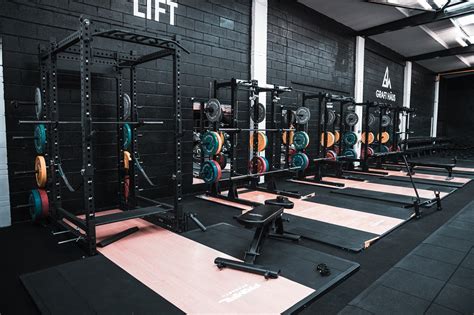How to optimize workout intensity for rapid strength & lean muscle gains, boosting male performance?

The Core of Gains: Understanding Workout Intensity
For men dedicated to transforming their physique and elevating physical capabilities, understanding and optimizing workout intensity is not just an advantage—it’s the absolute bedrock of success. Intensity isn’t merely about how hard you *feel* you’re working; it’s a measurable metric that dictates the physiological response your body has to training. Whether your goal is rapid strength increases, pronounced lean muscle hypertrophy, or enhanced overall male performance, dialing in your intensity is paramount.
At its heart, workout intensity refers to the load or effort exerted during an exercise. This can be quantified in various ways: as a percentage of your one-repetition maximum (%1RM), by the number of repetitions performed to failure, or through Rate of Perceived Exertion (RPE). The higher the intensity, the greater the stimulus for adaptation, forcing your body to get stronger and build more muscle to cope with the demand.
The Cornerstone: Progressive Overload
No discussion on optimizing intensity is complete without highlighting progressive overload. This fundamental principle states that to continuously make gains, you must consistently challenge your muscles beyond their previous capabilities. If you lift the same weight for the same reps indefinitely, your body will have no reason to adapt further.
Progressive overload can be achieved by:
- Increasing the weight lifted.
- Performing more repetitions with the same weight.
- Doing more sets.
- Decreasing rest times between sets.
- Increasing time under tension.
- Improving exercise form to engage muscles more effectively.
Consistently applying progressive overload ensures your muscles are always pushed to grow stronger and larger, directly translating to rapid gains.

Optimizing for Strength: The Power of Heavy Lifts
If rapid strength gains are your primary objective, your training intensity should lean towards heavier loads and lower repetition ranges (typically 1-5 reps). This approach primarily targets the nervous system, improving its efficiency in recruiting fast-twitch muscle fibers, which are crucial for generating maximum force. Compound movements like squats, deadlifts, bench presses, and overhead presses, performed with near-maximal effort, are the kings of strength building. Adequate rest between sets (3-5 minutes) is essential to replenish ATP stores and ensure each lift is performed with maximal effort and minimal fatigue.
Building Lean Muscle: Hypertrophy’s Sweet Spot
For lean muscle mass, intensity shifts towards a balance of challenging weight and sufficient volume, typically within the 6-12 repetition range. This rep range, combined with moderate to heavy loads, maximizes muscle damage and metabolic stress—two key mechanisms for hypertrophy. Focus on a strong mind-muscle connection, ensuring the target muscle is doing the work throughout the entire range of motion, and maintaining controlled eccentric (lowering) phases to increase time under tension. Shorter rest periods (60-90 seconds) can also enhance metabolic stress and growth factor release.

Strategic Training Variables for Peak Performance
Beyond simply lifting heavy or doing more reps, several variables contribute to optimized intensity and overall performance:
- Exercise Selection: Prioritize compound movements for overall strength and muscle, then incorporate isolation exercises to target specific muscle groups and iron out imbalances.
- Training Frequency: Hitting muscle groups 2-3 times per week, with adequate recovery in between, often yields superior results compared to once-a-week body part splits for strength and hypertrophy.
- Training to Failure (or Close): Regularly pushing sets to or near muscular failure ensures you’re providing a strong stimulus for growth. However, true failure should be used judiciously to avoid overtraining and allow for proper recovery.
- Periodization: Structuring your training into cycles (e.g., strength phase, hypertrophy phase) can prevent plateaus and optimize long-term progress.

Boosting Male Performance: Beyond the Gym
Optimized workout intensity does more than just build a great physique; it significantly boosts male performance across the board. Intense, heavy resistance training has been shown to positively influence hormone levels, including testosterone, which is crucial for muscle growth, strength, energy, and overall vitality. Furthermore, the functional strength gained translates into improved athleticism, better body composition, increased confidence, and enhanced mental resilience.
The Crucial Role of Recovery and Nutrition
You don’t get stronger in the gym; you get stronger recovering from the gym. High-intensity training places significant stress on the body, making recovery and nutrition non-negotiable for rapid gains. Prioritize:
- Adequate Sleep: 7-9 hours per night is vital for muscle repair and hormonal balance.
- High-Protein Diet: Aim for 1.6-2.2 grams of protein per kilogram of body weight to support muscle protein synthesis.
- Balanced Macronutrients: Sufficient carbohydrates fuel intense workouts and aid recovery, while healthy fats support hormone production.
- Hydration: Water is essential for every bodily function, including muscle performance and nutrient transport.
- Active Recovery: Light cardio, stretching, or foam rolling can aid blood flow and reduce soreness.

Integrating Periodization and Deloads
To sustain rapid gains and prevent burnout, injury, or plateaus, integrating periodization and planned deload weeks into your training is critical. Periodization involves strategically varying your training variables (intensity, volume, exercise selection) over time. Deload weeks, typically involving a significant reduction in volume and/or intensity, allow your body to fully recover, repair, and supercompensate, priming you for new gains when you resume heavier training.
Conclusion
Optimizing workout intensity is the most direct path to rapid strength gains, lean muscle development, and enhanced male performance. By understanding the principles of progressive overload, tailoring intensity for specific goals (strength vs. hypertrophy), strategically manipulating training variables, and meticulously prioritizing recovery and nutrition, you can unlock your full potential. Consistency, smart programming, and a commitment to pushing your limits—safely and intelligently—will be your greatest allies on this transformative journey.







